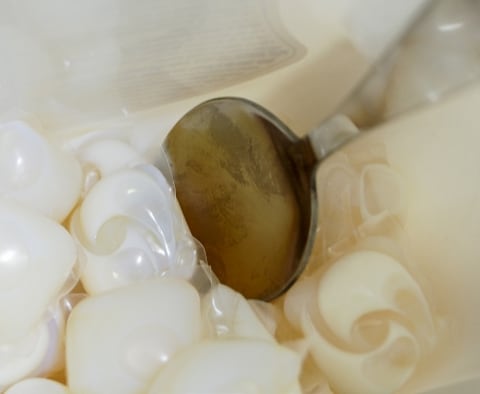With the new year came 2018’s first viral sensation or meme: the phenomenon of consuming detergent pods. This trend is baffling, but it’s an example of how destructive trends can affect people.
Detergent pods may look colourful and tempting, and smell wonderful, but they are obviously not something you should eat. The blend of chemicals in them can make you throw up and even irritate your eyes on contact. They can also cause stomach pain, lethargy and respiratory problems.
Despite all of these negative effects, a meme depicting the consumption of Tide Pods has become popular. There are videos and tweets online showing how enticing they can be, but what actually motivates people to eat these forbidden snacks?

Detergent pods can be mistaken for treats by both children and adults.
According to the American Association of Poison Control Centers, there were over 10,500 reports regarding children under five who were exposed to detergent pods in 2017. Children are not the only ones consuming the pods, as adults have also reportedly faced grave consequences for eating them.
From 2012 to 2017, there were six adult deaths caused by the ingestion of laundry detergent packs in the United States that were reported to the Consumer Product Safety Commission. In all six cases, the adult consumption of detergent pods involved people with dementia who confused the pods with food items.
As a result of these cases, many companies have introduced safety measures for their detergent pods — such as latches on the containers that are more difficult to open, more obvious warning labels and opaque containers that hide the pods from view. Despite these measures, no changes have been made to the pods themselves — which are more dangerous than typical detergents, as they are more concentrated and brightly coloured.
Despite the negative health effects, Tide Pods do look appetizing. The bright colours alone are enough to entice children to eat them. These liquid-filled pods also have a unique texture that makes them feel like gummy candies. Even the managing director of the Florida Poison Information Center has mentioned that detergent pods resemble candy.
Even when adults are informed of the dangers of consuming detergent pods, the temptation to eat them is high. This temptation is the foundation for a popular meme and also the root of the risk posed to children and adults who could mistake the pods for candy.
Another reason why people could be tempted to eat these pods can be linked to the power of social media — wherein people post videos, tweets and pictures of pods, relating them to foods or discussing how they look tasty. This has motivated others, who want to imitate the meme and make the same joke, to try these chemical packets
For example, someone jokingly tweeted that, starting in 2018, we will eat Tide Pods rather than Xanax, which is a medication used to treat anxiety. Halsey, a singer-songwriter from the U.S., tweeted that she was considering eating Tide Pods just because it seemed weird to her that others were eating them.
Eating detergent pods is part of a recent sensation where one meme can lead to a worldwide response from people — like eating Tide Pods and then posting videos or tweets about it online. These memes could lead to life-threatening consequences for consumers by perpetuating the idea that detergent pods can be eaten, thereby increasing the risk for children and those with dementia.
In 2015, reported cases on the harm caused by consuming detergent pods pushed Proctor & Gamble, Tide’s parent company, to add a bitter taste to the pods. They also added more secure packaging to their product, along with extensive warnings about the risks of leaving the pods out in plain sight, to prevent the consumption of Tide Pods. Time will tell if this new meme will prompt additional safety measures.
—
Kimia Bayattork
Photo: Michaela DeMong